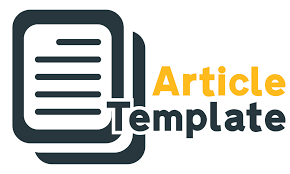POLISEMI DALAM BAHASA KULISUSU
DOI:
https://doi.org/10.36709/pesastra.v2i2.48Keywords:
Kulisusu; language; polysemyAbstract
The formulation of the problem in this study is how are the forms of polysemous words in the Kulisusu language. The objectives to be achieved in this study are to describe the forms of polysemous words in the Kulisusu language. This type of research is library and field research, because it involves informants. The method used is descriptive qualitative. The data for this study are in the form of written data and oral data. Data collection in this study is the listening method (observation) and the speaking method (interview method). The listening method is by listening to the language from written sources. The speaking method is asking informants about the truth of dictionary data. The results of the study show that in the Kulisusu language there are polysemous words. The basic word forms in the Kulisusu language are alo, ari, aru, awa, balaa, owose, wula, laha, laro, ehe, bagaa, hala, mohali, julu, kamba, makida, limba. Derivative word forms in Kulisusu language are inimpia, maasiako, pa’ario, tekoo, mokora. Redundant word forms in Kulisusu language are po’i-po’ia, mola-molaa. Then compound word forms in Kulisusu language are ana bua. The conclusion in this study is that polysemy forms in Kulisusu language include basic words, derived words, redundant words, and compound words. Polysemy is a word or phrase that has more than one meaning. These meanings are still interrelated with each other.
Downloads
References
Asrianingsih, A., Sailan, Z., & Marwati, M. (2019). Polisemi Dalam Bahasa Tolaki. Jurnal Bastra (Bahasa Dan Sastra), 4(1), 1. https://doi.org/10.36709/jb.v4i1.10717
Bandana, I. G. W. S., et al. (2002). Polisemi dalam bahasa Bali. Jakarta: Departemen Pendidikan Nasional, Pusat Bahasa.
Delaseniati, S. (2023). Polisemi dalam bahasa Dayak Ngaju. Palangka Raya: Balai Bahasa Provinsi Kalimantan Tengah.
Ekoyanantiasih, R., Siregar, M. G., & Sasangka, S. S. T. W. (2007). Polisemi verba dalam bahasa Melayu Betawi. Jakarta: Pusat Bahasa, Departemen Pendidikan Nasional.
Ino, L. (2020). Penggunaan Negasi Dalam Bahasa Kulisusu Pada Guyup Tutur Etnik Kulisusu (pp. 185–203).
Kurniawan, A., Muhammadiah, M., Anggita Ristia Damanik, B., Sudaryati, S., Dalle, A., Juniati, S., & Neneng Nurfauziyah, A. S. (2023). Semantik (Vol. 37, Issue 4). https://doi.org/10.2307/3539870
Maharani, Marafad, S., Rahim, A., & Sulfiah. (2019). Polisemi Dalam Bahasa Wolio Jurnal Hasil Penelitian. Jurnal Pendidikan Bahasa, 8(1).
Manaf, N. A. (2010). SEMANTIK BAHASA INDONESIA.
Mahmud, N. (2015). Polisemi dalam bahasa Gorontalo (Skripsi, Universitas Negeri Gorontalo).
Purwani, R. (2020). Polisemi dalam bahasa Jawa dialek Banyumas. Jurnal Ilmiah Bina Bahasa, 12(2), 11–22.


